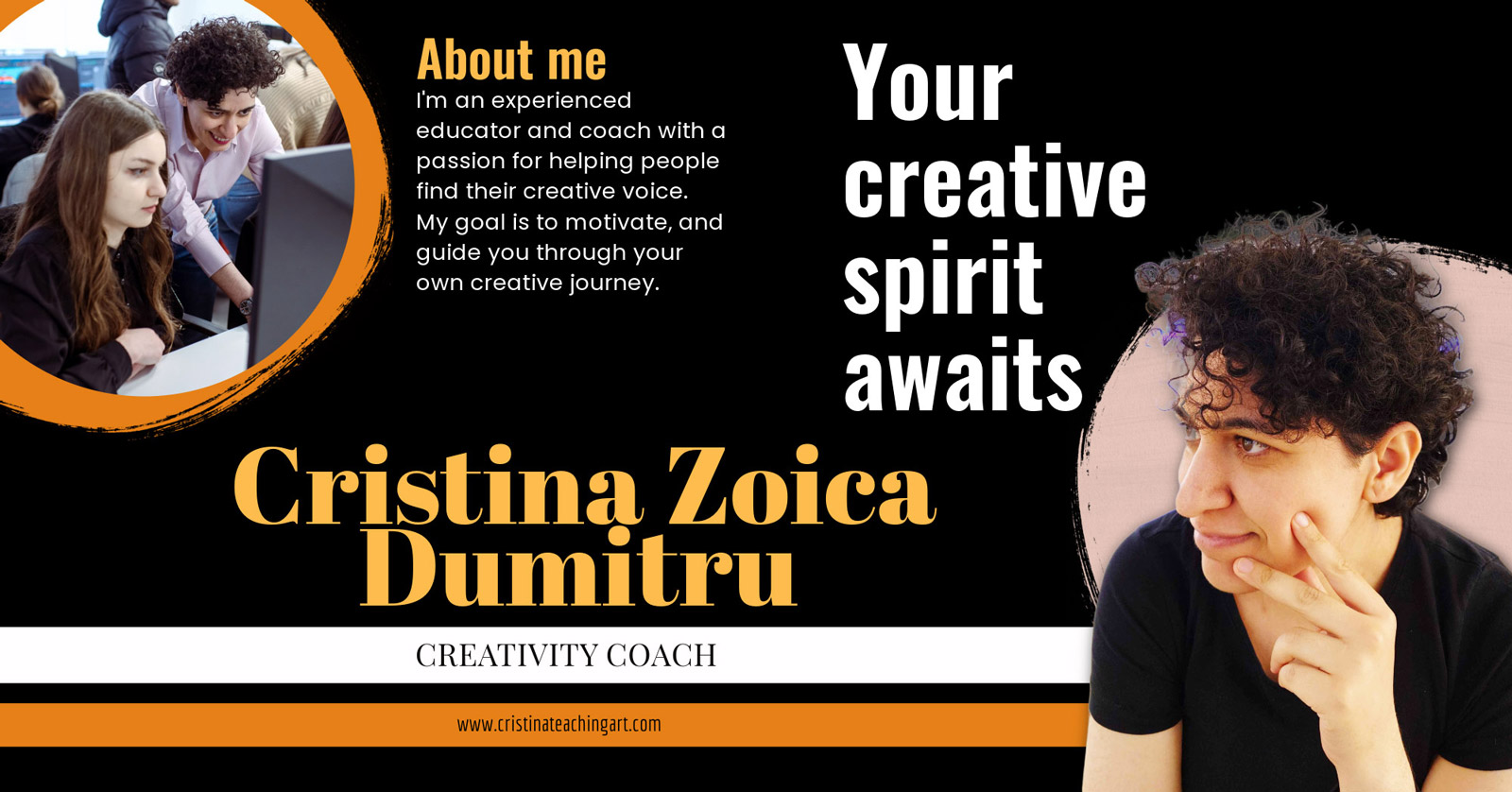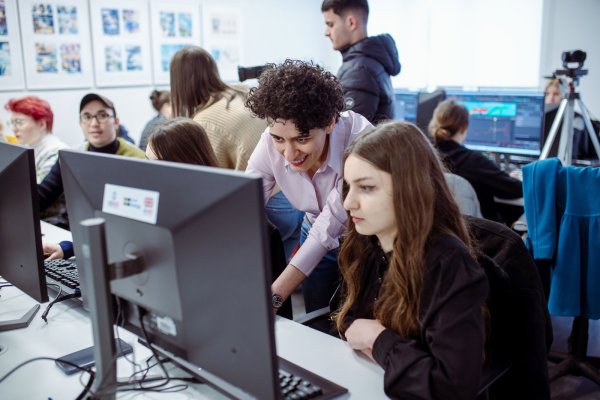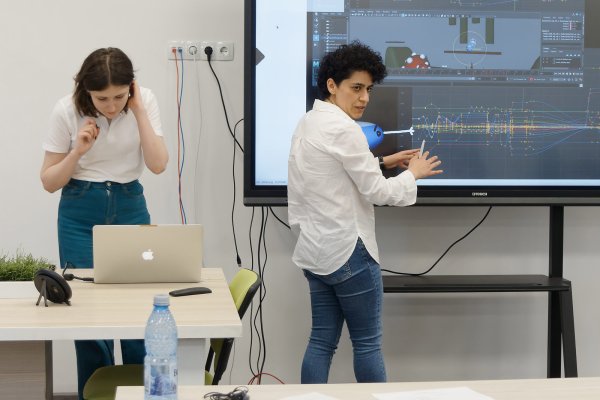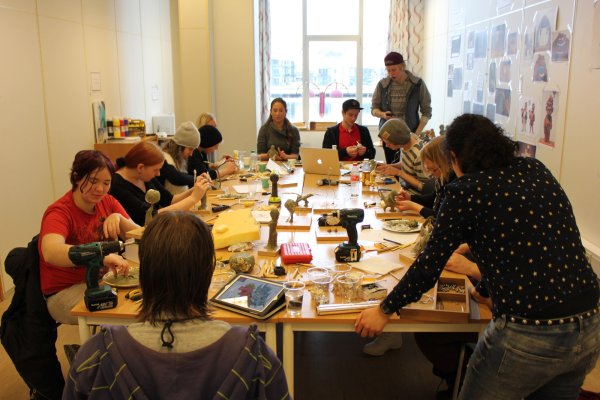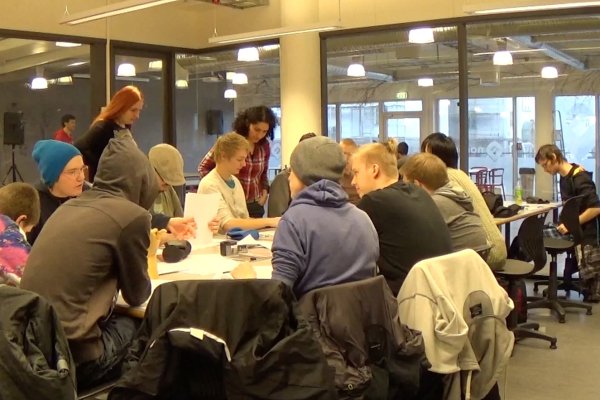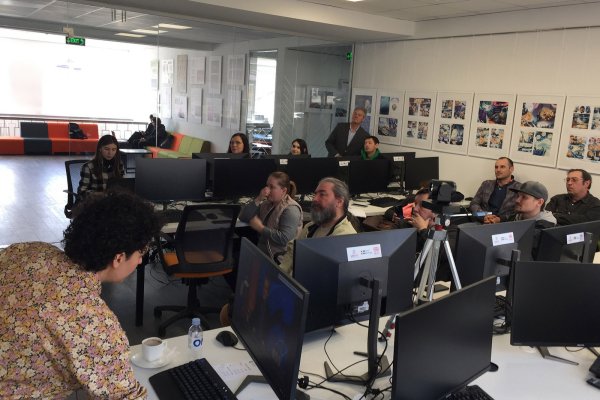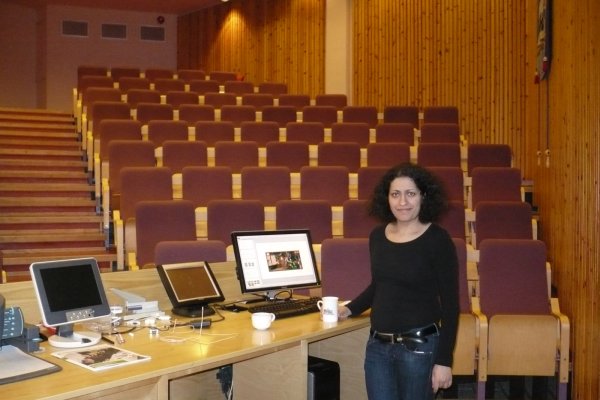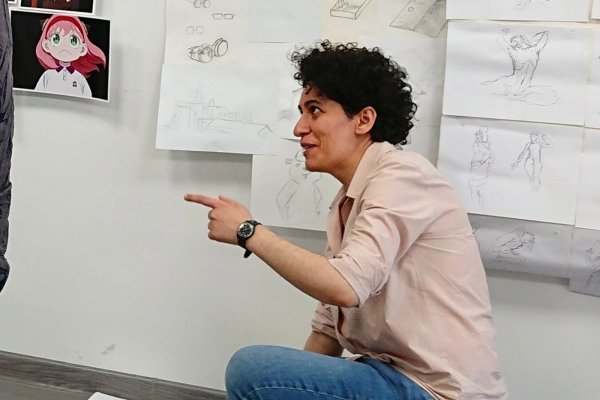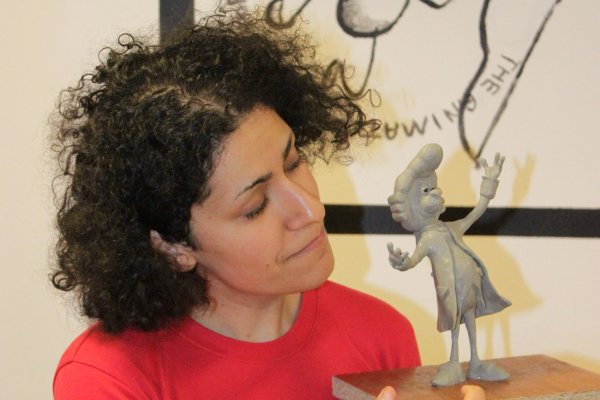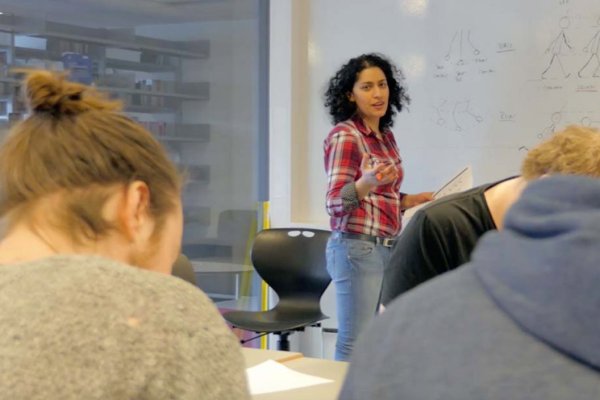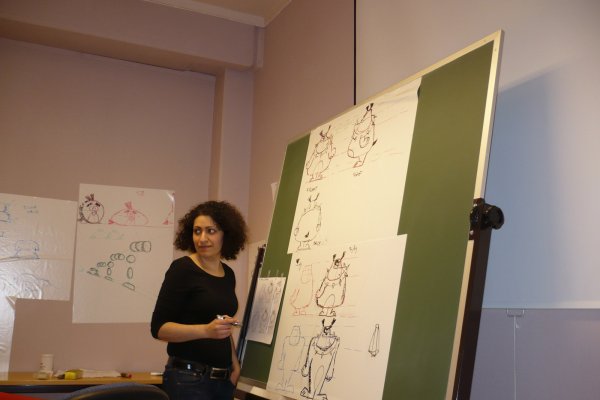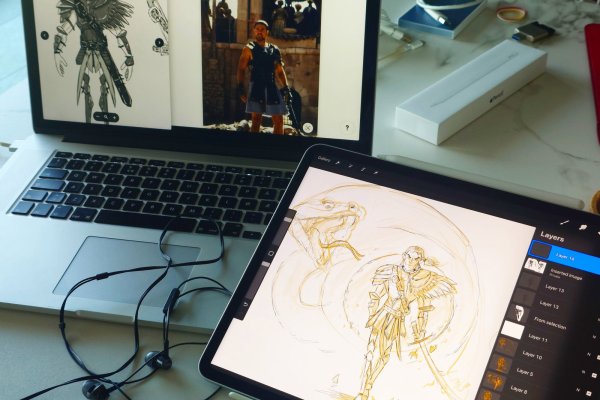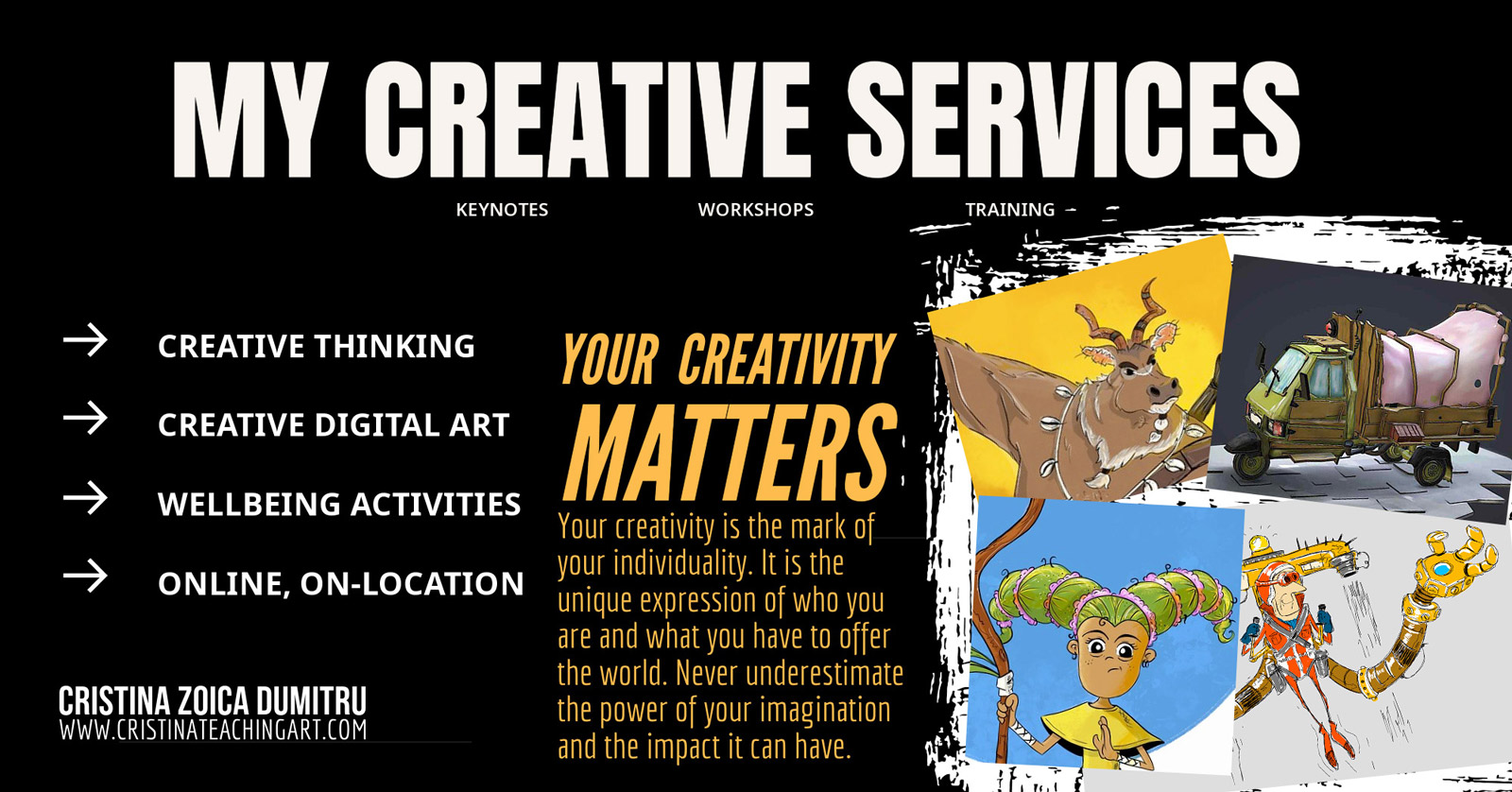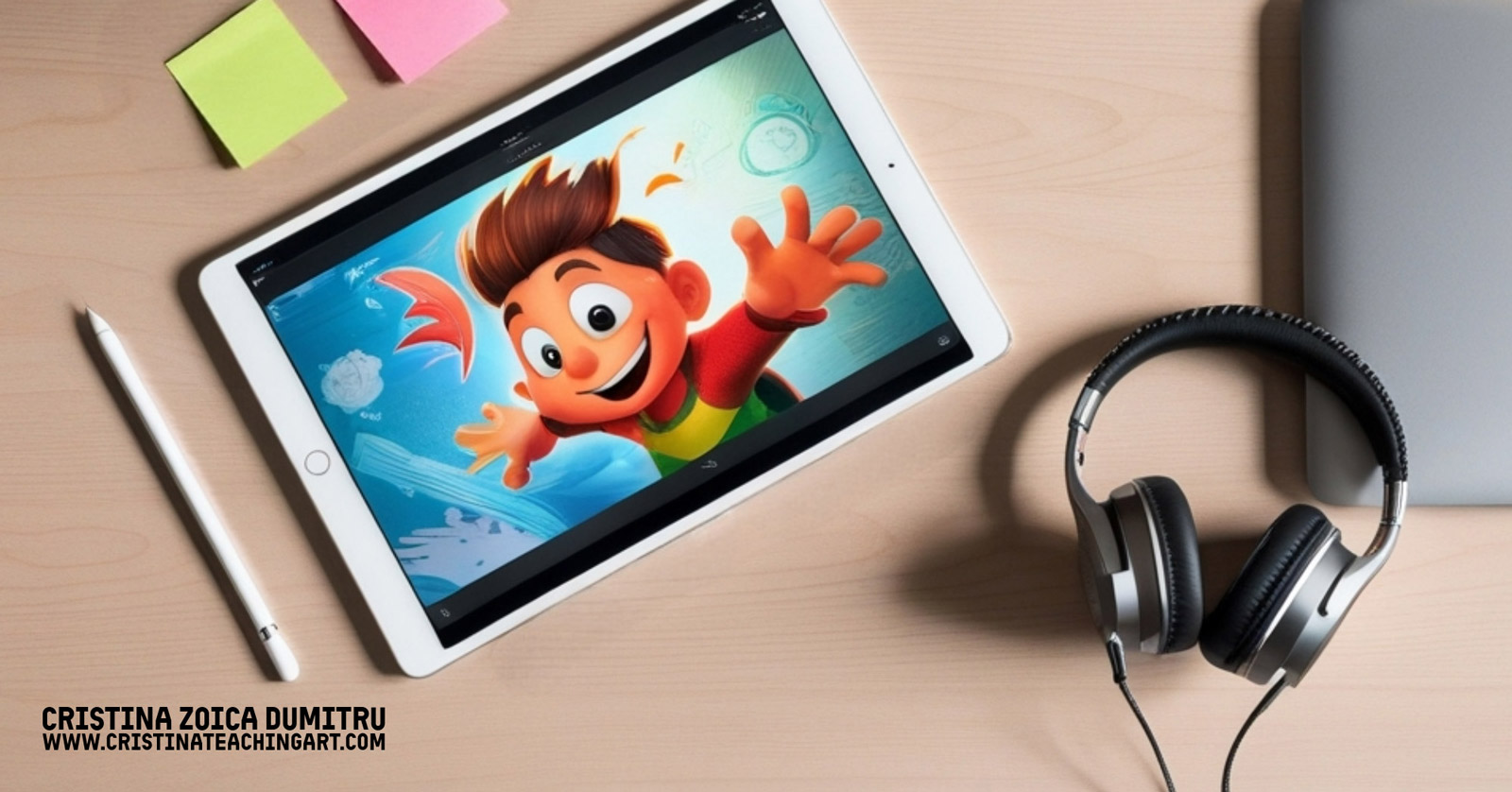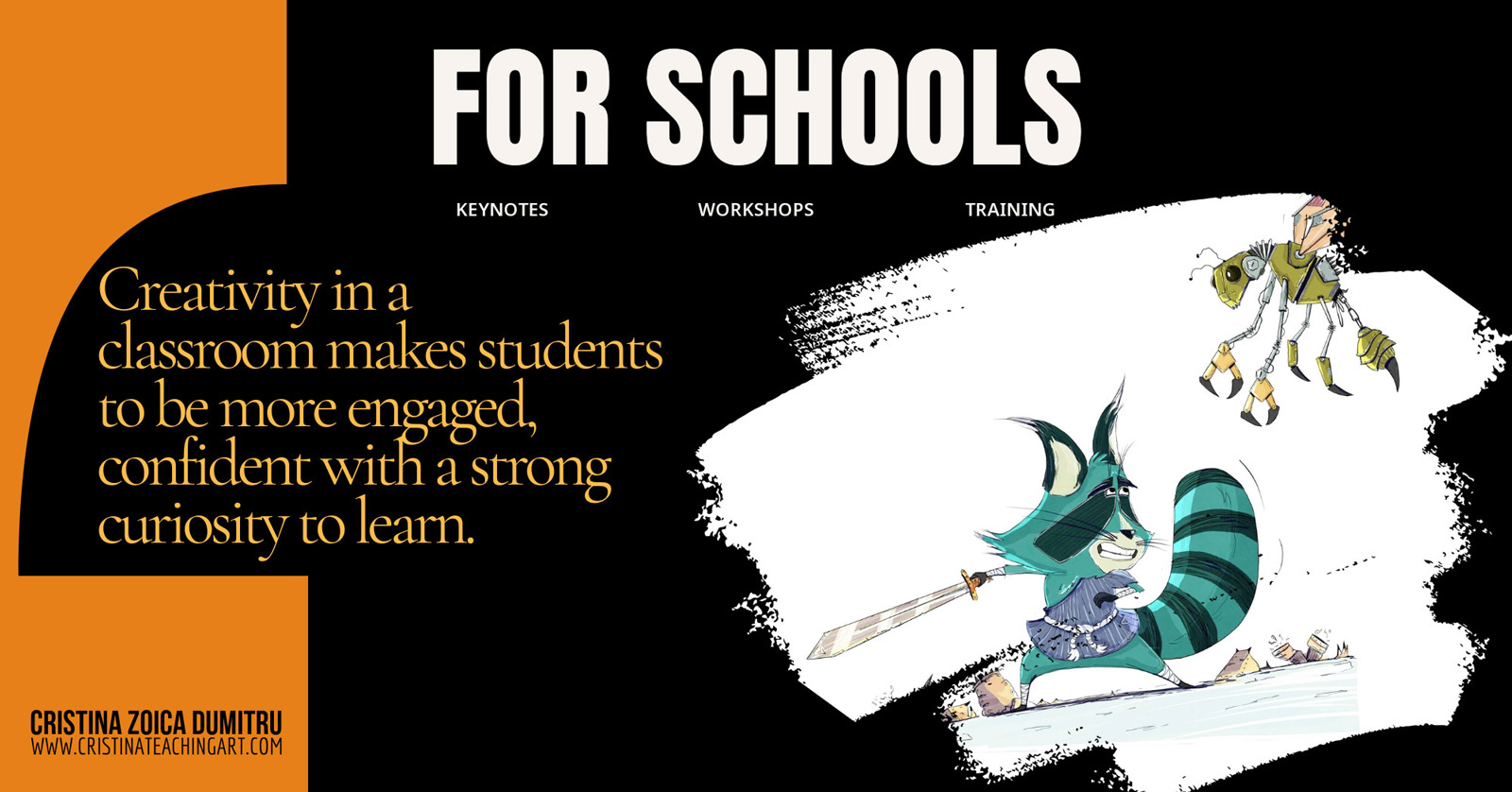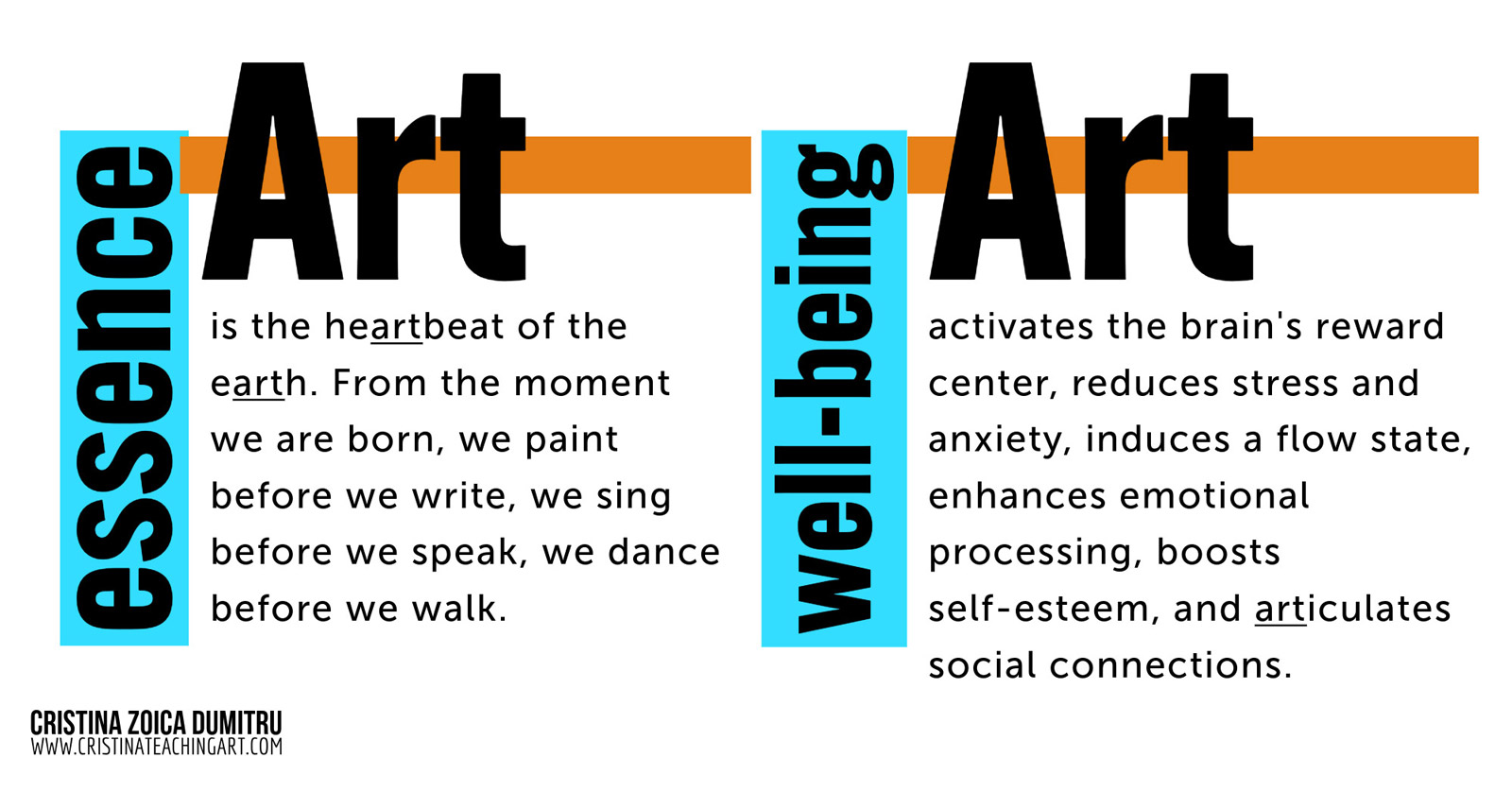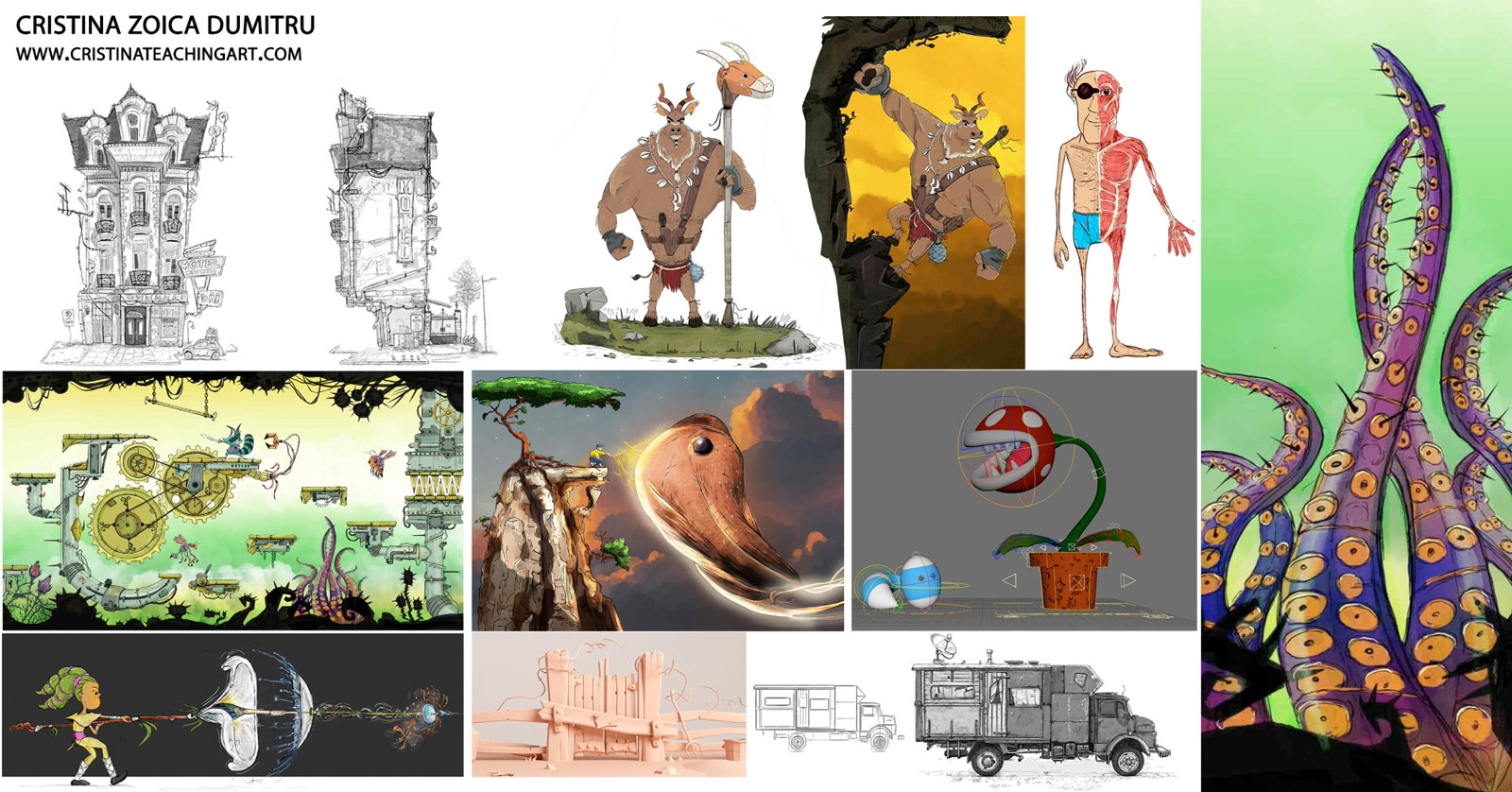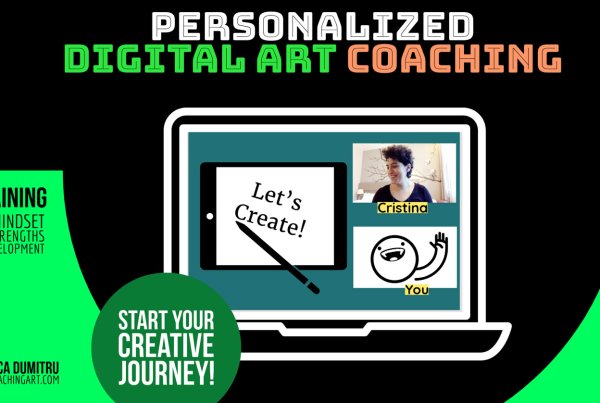JUMP TO
My creative training empowers students to unleash their creativity and imagination through innovative and engaging courses. My services are designed to foster personal growth and artistic expression, providing an opportunity for students to explore the world of digital art. Whether it’s through drawing, painting, animation, storytelling or interactive media, I equip students with the skills and confidence to turn their creativity into reality.
About Cristina
Since 2012, I’ve designed courses and taught digital art across Norway, Sweden, Denmark, the Netherlands, the US, UK, Romania, and Moldova. My background includes working in higher education institutions and creative media studios, where I’ve held roles such as consultant, manager, lecturer, and digital artist.
I combine my expertise in education and personal development with my background in digital art to promote holistic learning.
This unique blend of technical and artistic skills allows me to approach digital art from a multidisciplinary perspective, fostering creativity and critical thinking in my students.
My goal is to make cultivating creative thinking accessible to everyone, not just through the standard education system, but through customized methods. I teach creative subjects like Concept Art, Character Animation, Drawing and Sketching, Modeling and Sculpting, in 2D and 3D.
Creative Services For Schools
I founded Cristina Teaching Art, where I offer digital art courses and educational coaching services. My mission is to challenge students to reach their maximum potential for creativity and authenticity. I offer creative services to schools, focusing on empowering students through art and creativity.
My services can include:
- Art Workshops and Classes: Interactive sessions that introduce students to various art forms and techniques, encouraging self-expression and creativity.
- Creative Thinking Programs: Activities designed to enhance students’ problem-solving skills and innovative thinking.
- Art-Based Learning: Integrating art into the curriculum to make learning more engaging and effective, helping students understand complex concepts through creative means.
- Digital Art Portfolios: Organizing public portfolios to showcase students’ work, providing them with a platform to share their creativity and build confidence.
- Collaborative Art Projects: Group projects that promote teamwork, communication, and collaboration among students.
- Custom Art Programs: Developing tailored art programs that align with the school’s goals and the students’ interests.
These services aim to integrate creativity into the daily routine of schools. Whether you’re looking to enhance students’ digital art skills, develop a creative mindset, or provide personalized educational coaching, I provide the tools and guidance to help your students thrive.
My approach combines practical techniques with innovative methods, ensuring that creativity becomes a natural part of the school environment.
In today’s digital landscape, it’s imperative that young people evolve from passive consumers of digital media to active and innovative creators. My services will empower students with the necessary skills, knowledge, and self-assurance to produce their own digital artwork, cultivating storytelling abilities, creativity, imagination, and critical thinking.
By doing so, it will foster a more profound understanding and appreciation of the digital world, complementing the school’s existing services and enriching the students’ educational experience.
The Use Of Digital Tools
I use a variety of software, 2D and 3D, which can be used on multiple devices. Just to give a few examples, I utilize platforms like Adobe Spark and Canva for designing visually appealing graphics. I use digital whiteboards such as Miro to brainstorm and organize ideas collaboratively. I use Procreate, Sketchbook Pro to draw, paint or do collage artwork.
I also use AI generative tools to facilitate brainstorming sessions, prototype visual ideas, or stimulate our imagination. These tools provide a creative platform that helps me explore concepts, experiment with different designs, and generate innovative solutions.
All these, and much more, are dynamic and digital spaces for visual thinking, creative creation and real-time collaboration, making it engaging to develop and refine creative projects.
By incorporating digital tools and techniques, we can approach creativity from different angles and develop innovative ways of creation.
Problem Statement
The following are some examples of social issues among young people related to their consumption of digital media, which can potentially lead to academic under-performance and health problems.
- Lack of Critical Thinking: Uncritically consuming digital content can unfortunately lead to the spread of misinformation and hinder the development of well-rounded opinions.
- Mental Health Issues: Excessive consumption of digital entertainment may be associated with mental health challenges such as anxiety, depression, and stress.
- Addiction: Digital entertainment can be quite addictive, potentially resulting in excessive screen time and a neglect of other important activities like studying, exercise, and in-person social interaction.
- Social Isolation: Excessive engagement with digital entertainment may limit opportunities for in-person social interaction, potentially resulting in feelings of loneliness and isolation. This could hinder the development of social skills and the ability to cultivate meaningful relationships.
Objectives
Education managers must take action to promote activities that enhance creativity without the pressure of grades or labels of good vs. weak achievements. Each student should have the opportunity to learn about creativity, imagination, focused creation, authenticity, and how to develop their unique ideas.
Creativity in a classroom makes students more engaged and confident. They take responsibility for their learning, feel assured in mastering complex topics, and develop a strong curiosity to explore subjects further.
Children and young adults are often blind consumers of digital entertainment such as animated films, games, and comic books, but they lack the insight into what it takes to be the artist behind those products.
Gaining a glimpse of this knowledge can transform their perception from consumer to creator.
- Foster Creation not Consumerism: Equip students with the tools and techniques to produce their own digital work, including visual graphics, books, illustrations, and animations, fostering a mindset of creation over consumption.
- Encourage Critical Thinking not Repetitive Thinking: Guide students in analyzing and evaluating existing digital art to deepen their understanding of artistic principles and styles, promoting critical thinking and analytical skills.
- Foster Innovation: Encourage students to creatively combine diverse elements of their school curriculum with digital art, fostering the development of original ideas that reflect their personal experiences and perspectives.
- Build Community: Create a collaborative environment where students can share their work, give and receive constructive feedback, and learn from each other’s creative processes, building a supportive and inspiring community.
- Meaningful Use of Technology: The integration of technology in the classroom is essential for enhancing student engagement and well-being. Providing training on various art software and platforms will familiarise students with the creative industry standard tools.
Benefits
Art provides children and youth with the opportunity to express themselves in ways they may not be able to with words. It allows them to explore their emotions in a safe and healthy manner. Art promotes well-being by activating the brain’s reward center, reducing stress and anxiety, inducing a flow state, enhancing emotional processing, boosting self-esteem, promoting mindfulness, and facilitating social connections.
By creating art, students can express their feelings and work through difficult emotions, which is particularly important for those going through challenging times or who feel like they don’t fit in.
It is essential to help students transition from passively consuming digital media to actively creating digital art, fostering their creativity and innovation. Empowering students to express themselves digitally will prepare them to contribute positively to the digital world.
Digital art encompasses a wide range of skills and activities, including storytelling, visual communication, brainstorming, concept prototyping, technical workflows, effective time management, teamwork, and, most importantly, the continuous cultivation of creative thinking and imagination.
- Increased Self-Confidence: Boost students’ confidence in their abilities as creators of digital content through creativity and self-expression.
- Development of Creativity and Imagination: Nurture original and innovative concepts through the ideation process, using brainstorming and concept mapping techniques.
- Enhanced Technical Skills: Improve students’ proficiency in using creative digital tools and software.
- Teamwork Capabilities: Foster a stronger sense of community and social collaboration among students.
- Focused Creation: Guide students in focusing on a project from brainstorming to execution, enhancing their ability to see a concept through to completion and fostering patience and commitment.
- Encourage Authenticity: Help students find and express their unique artistic voice, encouraging self-expression through their digital works.
Popular Topics
All my topics can be delivered in different formats such as keynote presentations, workshops, coaching sessions, and training programs, and these can be conducted either online or on-location.
Here are some examples of popular topics, but not limited to:
1. Develop Observation Skills
Developing keen observation skills is essential in visual arts, as it fuels the imagination. By cultivating the ability to observe and reflect on the world around us, individuals can nurture spontaneity and creativity. Visual arts activities such as brainstorming, visualization, and storytelling offer opportunities to nourish the creative aspects of ourselves.
2. Where Imagination Meets Reality
To capture the illusion of life through movement, the artist must blend creativity with an analytical approach, enhancing imaginative powers. For example, an animator must understand physics theories related to motion. Similarly, a concept artist must grasp human anatomy to understand character physiology.
3. What is Character Animation
Character animation is the art of visual storytelling also known as the “illusion of life”. It involves bringing characters to life through movement, body language, and emotions. Essentially, character animation is a multifaceted discipline that combines artistic creativity with technical expertise. It is the art of making the impossible seem possible and the inanimate come alive.
4. What is Concept Art
Concept art is the art of world-building of creative stories. It is used to communicate and visualize ideas before they are fully realized in the final game or film. It translates written descriptions or concepts into tangible visual representations, setting the overall style, color palette, lighting, and visual atmosphere for the environment, characters, and objects within any story.
5. Meaningful Connection Between Teachers and Students
The student-teacher relationship is the cornerstone of a nurturing classroom environment, fostering the development of self-worth and self-confidence in students. By creating a supportive and engaging atmosphere, educators can inspire and motivate students. This connection brings out the best in every student, encouraging a desire for learning and personal growth.
Payment
All my services are structured around a fixed number of hours with a clear purpose. These can range from short-term engagements, such as keynotes or hands-on workshops, to long-term commitments like professional training courses.
Therefore, the fee depends on several factors, including:
- Format type: keynote, workshop, coaching, training.
- Event type: in-person, virtual.
- Number of attendees.
- Follow-up: with or without reports and reflections.
- Any additional specific tailored needs.
Feel free to contact me for more information. Please provide as much detail as possible, including a description of your audience and event details.
Book A Free Session
If you’re interested in my creative services for developing creative thinking, you can contact me through my website, use the contact form, or simply click the button below. I’ll confirm your request within 48 hours.
We’ll begin with a complimentary 60-minute session, which I call “Get to Know Each Other.” During this session, we’ll establish goals based on your needs and audience. Afterward, I’ll provide you with a proposal and payment plan.
My Other Services
- Unlocking Creativity: Creative Training in Schools ⬅ you are here
- Unlocking Creativity: Creative Training in Companies
- Unlocking Creativity: 1:1 Art Coaching
- Mindset Training: A Self-Empowerment Journey
Let’s Connect
I’m excited to engage with you, share updates, and explore new opportunities together. Don’t hesitate to reach out and let’s build a vibrant community!
Cristina Zoica Dumitru: LinkedIn • Website • Art Portfolio • Udemy • Facebook
Cristina Teaching Art: @YouTube • @Instagram • @Facebook • @Sketching On My Phone
Wisdom Memo: @Youtube • @Facebook • @Instagram
Find your passion, and it will lead you to your purpose. Embrace learning, and the universe will guide you. – Cristina

